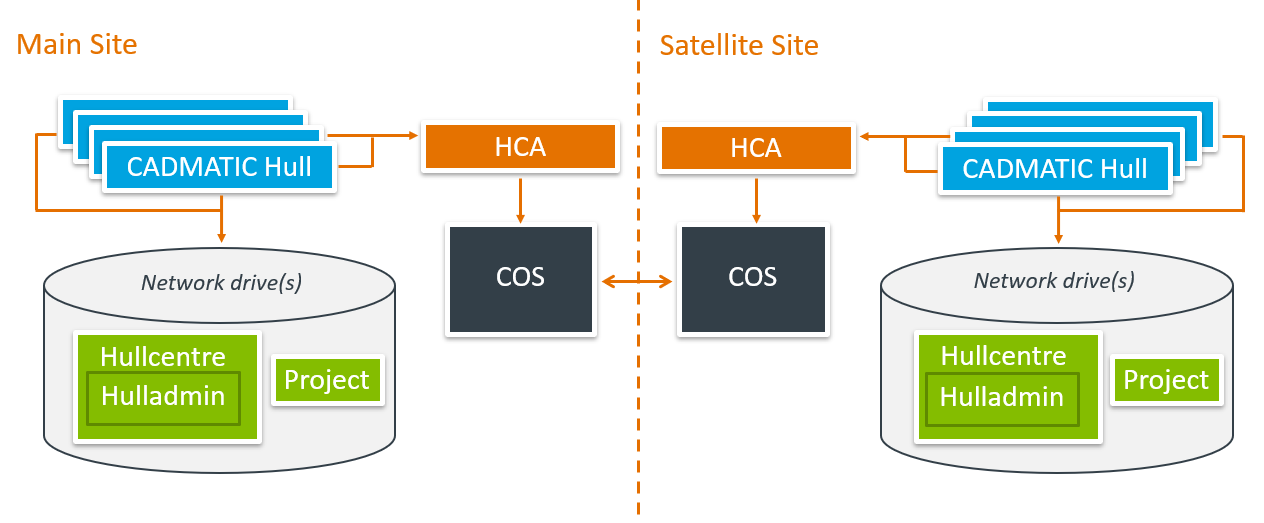COS environment
The COS (Common Object Storage) system has replaced the HDX server in Hull applications. COS offers a single replication mechanism and a single user management system to maintain, instead of two. The connection between Hull and Outfitting is also better, both in terms of setup and integration. Furthermore, COS enables new powerful features such as an integrated Work Breakdown (WBD) management, revision control and efficient reuse of data. For more information on differences between COS and HDX, see Main differences between COS and HDX.
In the COS environment, data is protected from being modified at multiple sites at the same time. Therefore, remote design teams can work in distributed projects using a common model database without conflicts. Projects are split into blocks, general project data, hull line subsets and Plantek, and these can all be saved to the COS server separately. You can also select to get and save only the construction data, which is faster than getting and saving all block data. Block construction data is distributed to sites and also kept up to date automatically. For more information on data exchange in the COS environment, see Data exchange.
An example setup is shown in the image below. The main site is the site that creates a COS project and therefore manages the checkouts within the COS network. All the other sites in the network are satellite sites. One COS server can host any number of projects, enabling it to be the main site for one project and a satellite site for another. For more information on setting up the COS network, see COS network setup.
Project data is stored on a shared drive, allowing multi-user access. The COS servers distribute the data between the different sites. The Hull COS Agent (HCA) operates between the Hull applications and the COS servers, storing and retrieving data. Therefore, Hull applications do not communicate with the COS server directly but the data always flows through the HCA. For more information on HCA, see Hull COS Agent (HCA).

Typically, one COS server is set up for each project. By default, each COS server is connected with one HCA. Each server has at least two databases (library and project). COS objects created in the databases carry the data; each COS object is a combination of identification, properties, attributes, references, and application data.
CADMATIC Hull can also be run as stand-alone, local projects without setting up the COS environment. The COS server is only needed when a project needs to be distributed.